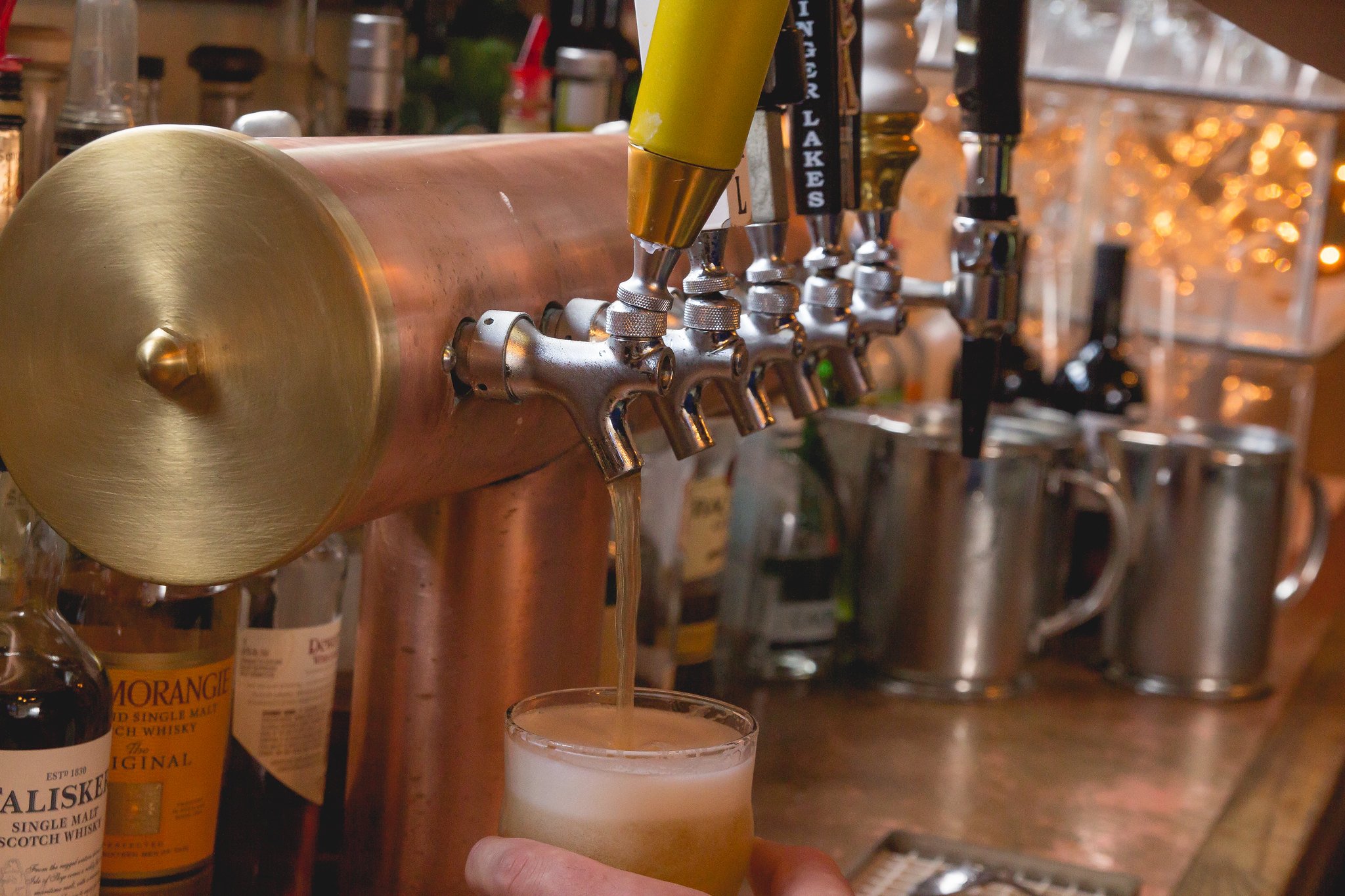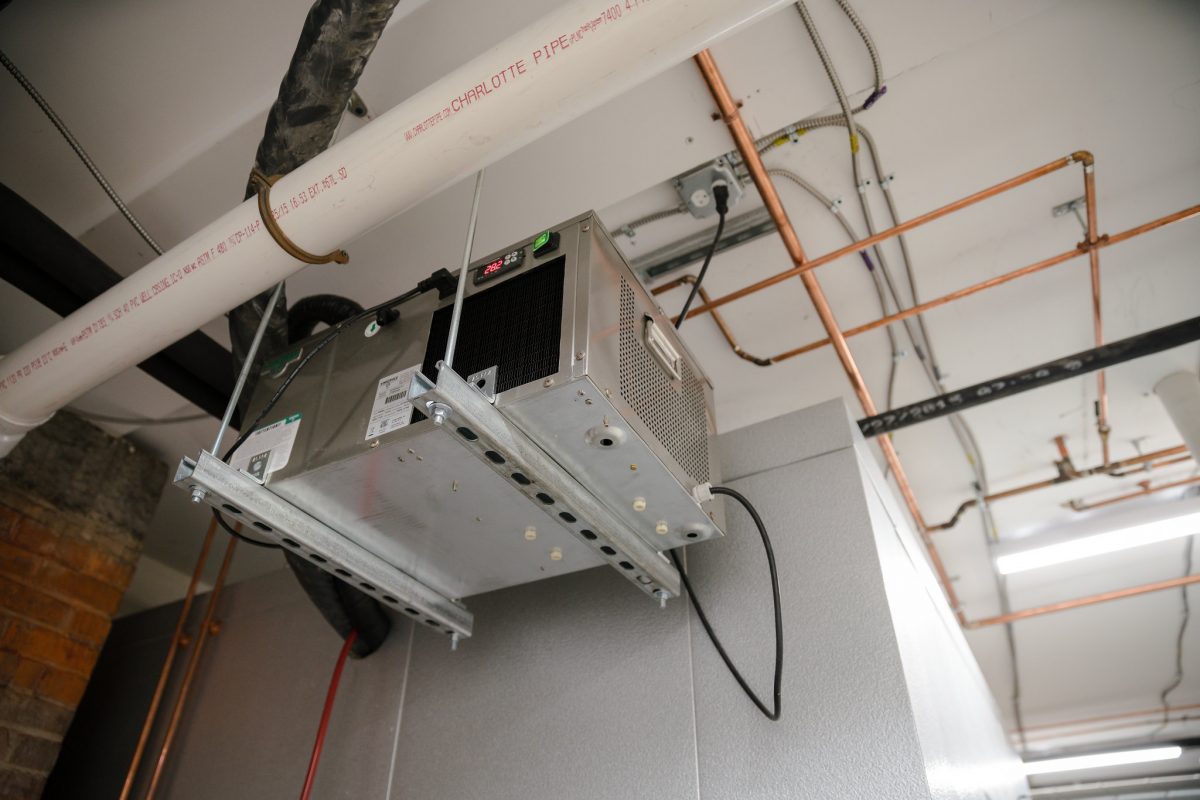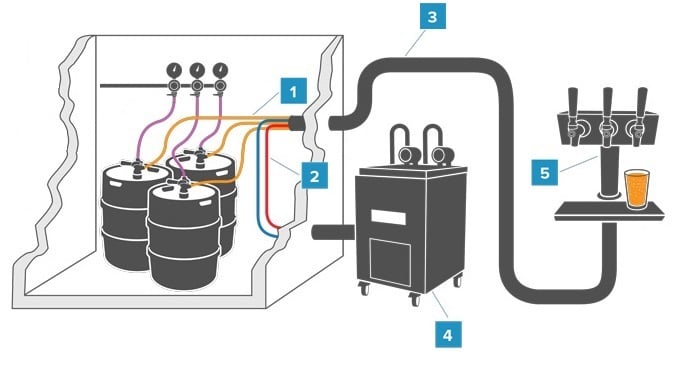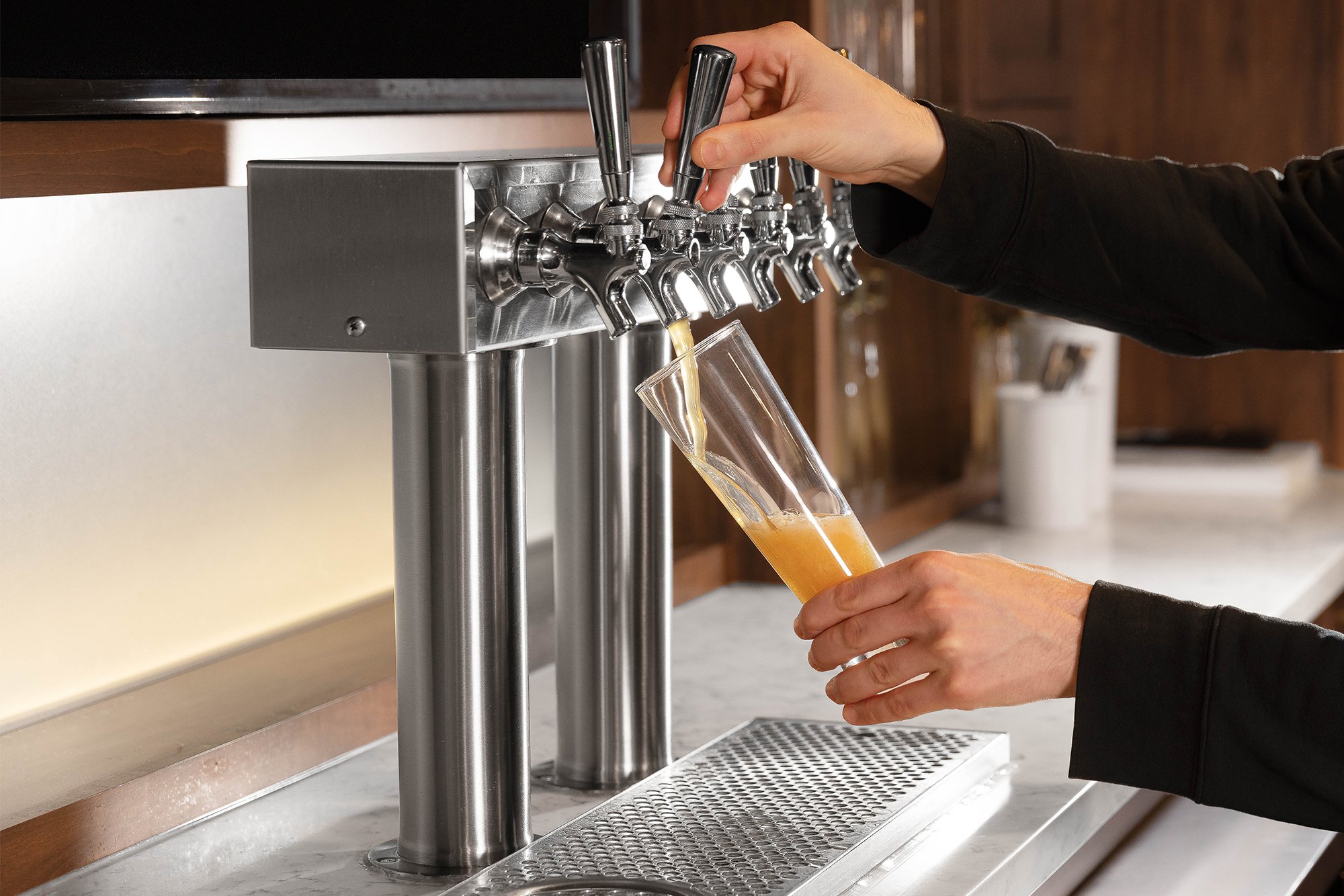
Learn more about troubleshooting your glycol cooled draft beer system.

Cold beer matters. That’s the long and the short of it. As the craft beer revolution has taken root, the emphasis on “the colder the better” has certainly waned; but still, no one wants to be served a room temperature glass of brew when they expect something a bit frostier and more refreshing.
That’s why glycol cooled draft beer systems are so integral to the success of bars that pride themselves on their beer service. Glycol dispensing is a premium option that dependably delivers perfectly chilled beer in order to quench your customers’ thirsts and keep them coming back for round after round of the good stuff.
What is a Glycol Cooled Draft Beer System?

For the majority of long draw or commercial draft beer systems, especially those running 6 or more beer lines or draft systems running over 15 feet, a glycol cooled system is the way to go. This system implements a chiller, also called a power pack (#4), that uses the power of glycol to keep your beer cold from keg to tap.
Glycol-cooled beer systems use propylene glycol, a non-toxic, food-grade antifreeze that’s been used for many years in food-processing systems. Propylene glycol is combined with water to create a chilled mixture, called a glycol bath. The glycol bath is pumped from the glycol power pack through the cooling lines (#2) that run parallel to your beer lines (#1). The glycol and beer lines run in an insulated package called the trunk line (#3). Both distinct lines are kept cold by the internal moisture barrier in the trunk line and the foil wrap that covers the lines. The trunk line runs to the draft tower (#5) where the beer lines connect to the faucet shanks, and the glycol delivery line (usually colored blue) connects to a copper loop that carries the glycol across the shanks. The glycol then returns to the chiller through the return line (usually colored red).

Glycol System Troubleshooting
If your glycol system is broken, then the quality of your beer will be affected. Beer will be more likely to pour foamy with the lines and tower not being properly cooled. The easiest way to prevent this from happening (and a far cheaper way than having to replace anything) is to regularly maintain all parts of your glycol dispensing system–the glycol power pack, glycol trunk line, the bath, the hardware, and the glycol itself.
To make your life easier, we’ve compiled this brief list of glycol system troubleshooting tips. If you’re experiencing issues with improper beer temperature or any other dispensing problem, this list is a good place to start.
Is the cover of your glycol bath closed?
If you leave the cover open, you risk allowing water vapor to dilute and weaken your glycol.
Is your glycol bath the right temperature?
We recommend regularly checking the temperature of your glycol bath (weekly is ideal, but no less than biweekly) to ensure that it’s within the optimal range as noted by the manufacturer. Many glycol chillers are equipped with a temperature gauge on the outside, but if you are experiencing issues, it’s worth your time to manually measure the temperature with a thermometer.
What temperature should I set the glycol chiller to?
For alcoholic beverages, your chiller should be set to 26-28 degrees (F). For non-alcoholic beverages, we recommend setting it at a slightly warmer temperature to prevent your drinks from freezing in the lines.
Is your glycol mixed properly?
You should always follow manufacturer specs for your glycol mixture, but typically, you’ll want to be in a ratio range of 35 – 40% glycol to water. Every few months, take a quick look at your glycol bath to check the viscosity and see if anything is noticeably amiss. At least once every year or so, test the freezing point with a refractometer or hydrometer and make any necessary adjustments to ensure optimal performance.
Is your beer being dispensed at the faucet at the right temperature?
Even if the chiller unit is reading the correct temperature, you should still check the temperature of the beer coming out of the faucet. This is because the length of the system could produce a drastically different temperature at the faucet than what is read and recorded at the chiller itself.
Is the motor running smoothly?
Observe your glycol chiller and listen for signs of distress from the motor. If you hear anything out of the ordinary or feel unexpected heat, call your draft beer technician.
Are the pumps operating correctly?
Ensure that the connections are tight and that all the insulation is accounted for. Much like the motor, the pump should always operate very smoothly, so any noticeable clanking, grinding, or other out-of-the-ordinary noise is a clear red flag.
Is the condenser free of dirt and other obstructions?
We recommend checking your condenser every three to five weeks and cleaning as necessary. The condenser won’t require thorough cleaning with every check, but every so often, you’ll want to remove the grills to get access to the condenser fins. Scrub these fins with a stiff brush and/or vacuum inside the condenser thoroughly to remove built-up debris.
Is there any damage to your trunk lines?
When properly installed, your trunk line is very durable. However, over time, it’s possible to experience ice buildup due to insulation damage or glycol leakage. It’s a good idea to visually inspect your trunk line at least a couple of times a year, or whenever your system is experiencing issues.
As always, if you check your system against these troubleshooting issues and the problem persists, please feel free to reach out to our team of draft specialists, and we’ll do what we can to help.
Tags:
Kegworks
Kegworks has been transforming hospitality spaces since 1998 with expertly crafted architectural metalwork and professional draft beer equipment, helping designers, architects, and bar professionals bring their visions to life.



Leave a Comment